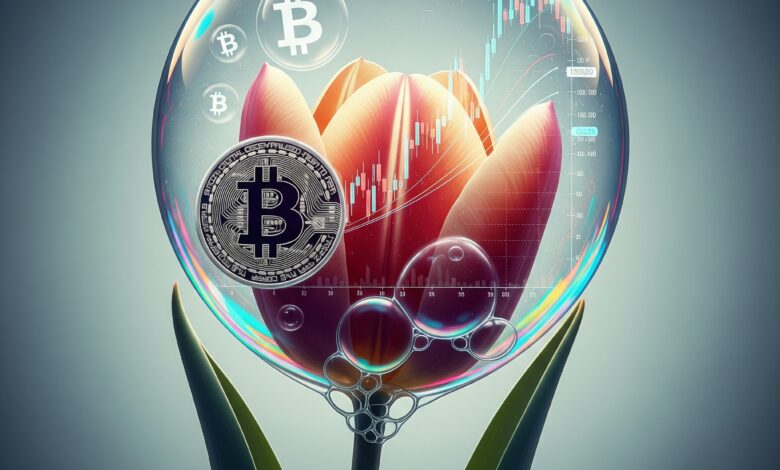From Tulip Mania to Bitcoin’s Bloom: Is History Repeating Itself?

In 17th-century Holland, a single flower ignited what is now considered the first recorded financial bubble in history, Tulip Mania.
What began as a symbol of beauty and status quickly spiraled into an episode of speculative frenzy, ending in financial ruin for many.
Now, centuries later, Bitcoin’s meteoric rise to over $122,000 has reignited comparisons. A recent report by Al Arabiya explored the parallels between tulips and tokens, urging caution, not necessarily because Bitcoin is a bubble, but because investor behavior often rhymes through time.
A Flower Becomes a Fortune
Tulips were introduced to Europe from the Ottoman Empire in the mid-16th century and soon became a must-have item among Dutch aristocrats. Their vibrant colors and rarity made them a symbol of wealth and sophistication.
By the early 1600s, tulips were no longer mere ornaments. They had evolved into speculative assets. People, from seasoned merchants to common craftsmen, began trading tulip bulb futures, often without ever seeing the actual bulbs.
At the peak of the craze in 1636, rare tulip varieties were selling for the equivalent of a luxurious house in Amsterdam. Buyers were no longer interested in flowers; they were chasing ever-rising prices, assuming someone else would pay more tomorrow.
But by February 1637, demand vanished. Auctions went silent. Prices collapsed. What had been a booming market turned into a cautionary tale. Fortunes were lost, and the event left a deep cultural scar, one that continues to serve as a metaphor for market mania.
Bitcoin: The Tulip of the 21st Century?
Fast forward to today, and Bitcoin is once again pushing boundaries. With its market cap now exceeding $2.4 trillion, Bitcoin has surpassed Amazon and Silver to become the fifth most valuable asset globally.
But is it tulips all over again?
Not quite. Unlike tulips, Bitcoin carries revolutionary potential. It represents a decentralized monetary system built on blockchain technology, a transparent, immutable ledger that enables peer-to-peer transactions without intermediaries. It has real-world use cases, from store-of-value to remittances, and even as a hedge against inflation.
Still, the psychological and speculative dynamics feel familiar. Many investors jump into Bitcoin not because they understand its fundamentals, but out of FOMO — fear of missing out — or hopes of quick gains. Much like 17th-century tulip buyers, they are sometimes driven more by hype than by a grounded understanding of value.
Social media has replaced the Dutch tavern as the rumor mill of choice. Buzzwords and price predictions spread like wildfire, often encouraging impulsive buying, sometimes without due diligence or risk awareness.
Where Bitcoin Breaks the Pattern
The key difference? Bitcoin isn’t just a symbol of prestige or a beautiful oddity, it’s built on a technological backbone. The tulip was, at its core, a decorative plant. Bitcoin is a digital asset with a programmable foundation and increasing adoption across finance, tech, and even national policies.
Blockchain, the underlying tech, allows for trustless transactions, programmable contracts, and decentralized applications. Bitcoin, as its flagship asset, is no longer ignored by institutions. Hedge funds, asset managers, and even some central banks are exploring or holding BTC as part of their reserves.
But like any innovation, Bitcoin goes through cycles: initial excitement, inflated expectations, corrections, and long-term integration. Volatility is part of the journey, not a flaw.
Lessons From the Past, Caution for the Present
Tulip Mania is more than a historical anecdote, it’s a mirror reflecting human behavior. It reminds us how quickly rational decisions can be clouded by dreams of fast fortune.
Bitcoin may be the flower of a digital age, but it’s also a test of how we engage with emerging technology. The challenge isn’t to fear every boom as a bubble, but to temper enthusiasm with understanding.
As we stand on the cusp of a decentralized future, one thing remains constant: markets are driven by emotion as much as logic. Greed, fear, and hope, the same forces that fueled tulip trades centuries ago, are still at play today.
Bitcoin might not be a bubble. But it’s also not immune. And that’s the real lesson history offers.





